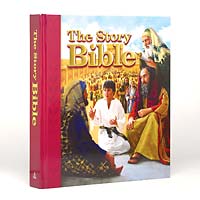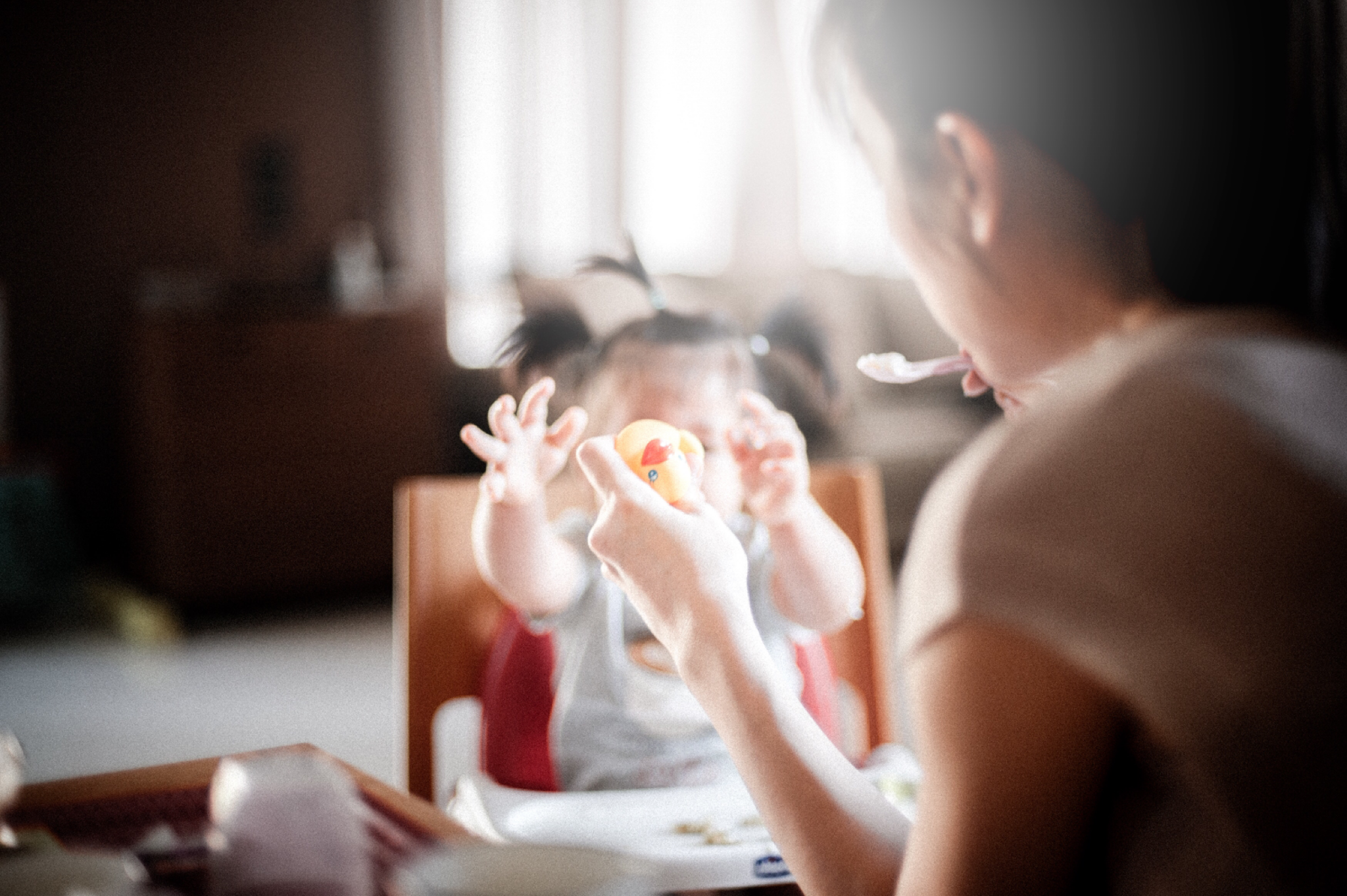Review of The Story Bible: 130 Stories of God’s Love, edited by Edward A. Engelbrecht and Gail E. Pawlitz
By Bethany Kilcrease and Tabitha Moldenhauer
The Story Bible came out in 2011, which is when we purchased it for our children, then ages 6 and 4. It’s a big book. As children’s books go, really big and heavy. Not that that’s a negative feature. It’s excellent for pressing leaves for Autumn crafts (I just discovered some very old maple leaves upon opening it today).
It contains 130 Bible accounts from the Old and New Testaments, presented in a readable format for children without losing meaning. A guide for parents and teachers is included that offers useful strategies for reading the stories with children in different age ranges. There is a comprehensive glossary in the back of the book that is helpful for young readers.
The illustrations are realistic and beautiful. For the very young, even though it isn’t a typical picture book, the illustrations capture and hold the attention well for the time it takes to read each story.
Each story has a short list of vocabulary words, discussion questions, an activity, and a prayer. These could easily be used as short devotions for home or classroom.
The beginning of the New Testament section has a table listing the Old Testament promises of the Savior contained in the book. This is a nice feature in keeping with the central idea of pointing always to Christ.
The only weakness in The Story Bible, in my opinion, is that the activities for some stories are a bit contrived. I appreciate the difficulty in coming up with 130 stellar activities for children based on Bible stories, so this is a very minor criticism. The activities are easily skipped if they aren’t something you or your child would like to do.
Overall, it’s an excellent book, and the little reviewers and I recommend it for preschool and early elementary school age children. And now, turning to Bethany….
I completely concur with Tabitha’s recommendation. If you look at CPH Bible story books from the mid-twentieth century, you’ll see that the Old Testament stories in particular were usually presented as bare historical events with moral lessons. Not so the new Story Bible! The page after the introduction clearly tells young readers that “The Bible is all about Jesus and you.” And then the stories actually follow through. The story about the Fall connects the Offspring of Eve to Jesus (at least in the “Ask” section), the story about God’s covenant with Abraham explains the promise’s ultimate fulfillment in Jesus, the story of Jesus teaching Nicodemus uses the same picture of Moses with the bronze serpent that had been used in the Old Testament story, etc.
Additionally, this story Bible doesn’t back away from the potentially scary stories in both Testaments. You can always gauge the hardcoreness of a Bible story book by checking out how it handles Judges. This book wins a full five-star rating for including the story of Jael and Sisera: “But Jael took a tent peg and a hammer in her hand…. She drove the peg into his [Sisera’s] temple until it went down into the ground. So he died” (146). Although I’m no child psychologist, as far as I can tell the text does a good job of preparing children for stories like this by explaining that although some parts of the Bible are “scary” and involve people being “mean,” “God will save His people. The story will end well” (97). The Jael and Sisera story, for example, concludes that “God stopped the enemies of the people of Israel” (147).
In terms of story selection, I was a little surprised not to see the story of David and Bathsheba and a few others. I also wish there was more from the epistles and Revelation. On the other hand, the editors included some stories I hadn’t really considered before like “Jehoiachin’s New Clothes.”
Finally, the vocabulary words mentioned by Tabitha are a nice touch. If your elementary age child can master all those he will have a better vocabulary than most college students these days. The “Ask” questions seem helpful and the prayers are short enough that I can get through them with my 19-month old daughter. Personally, I’m not a big fan of the “Do” activities though. These include things like “Ask an adult to rub some olive oil on your skin” (340). Um…no, definitely not. They also seem to involve a lot of puppet-craft. Maybe some mother out there has the time and aptitude for these tasks, but it’s definitely not me. So skip the olive oil skin lotion and puppet wizardry, but do buy this book and read it to/with your child frequently.



